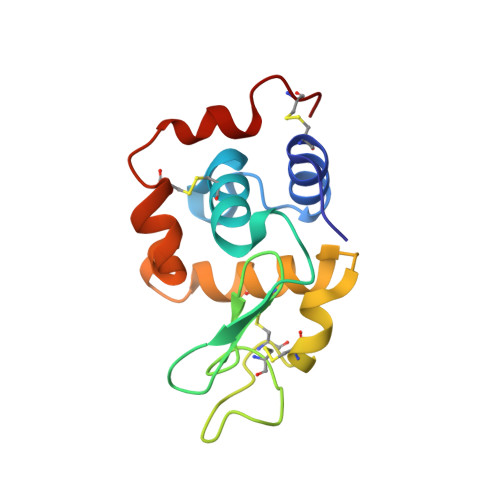Fast and accurate data collection for macromolecular crystallography using the JUNGFRAU detector.
Leonarski, F., Redford, S., Mozzanica, A., Lopez-Cuenca, C., Panepucci, E., Nass, K., Ozerov, D., Vera, L., Olieric, V., Buntschu, D., Schneider, R., Tinti, G., Froejdh, E., Diederichs, K., Bunk, O., Schmitt, B., Wang, M.(2018) Nat Methods 15: 799-804
- PubMed: 30275593
- DOI: https://doi.org/10.1038/s41592-018-0143-7
- Primary Citation of Related Structures:
6G89, 6G8A, 6G8B - PubMed Abstract:
The accuracy of X-ray diffraction data is directly related to how the X-ray detector records photons. Here we describe the application of a direct-detection charge-integrating pixel-array detector (JUNGFRAU) in macromolecular crystallography (MX). JUNGFRAU features a uniform response on the subpixel level, linear behavior toward high photon rates, and low-noise performance across the whole dynamic range. We demonstrate that these features allow accurate MX data to be recorded at unprecedented speed. We also demonstrate improvements over previous-generation detectors in terms of data quality, using native single-wavelength anomalous diffraction (SAD) phasing, for thaumatin, lysozyme, and aminopeptidase N. Our results suggest that the JUNGFRAU detector will substantially improve the performance of synchrotron MX beamlines and equip them for future synchrotron light sources.
Organizational Affiliation:
Swiss Light Source, Paul Scherrer Institute, Villigen, Switzerland.

















